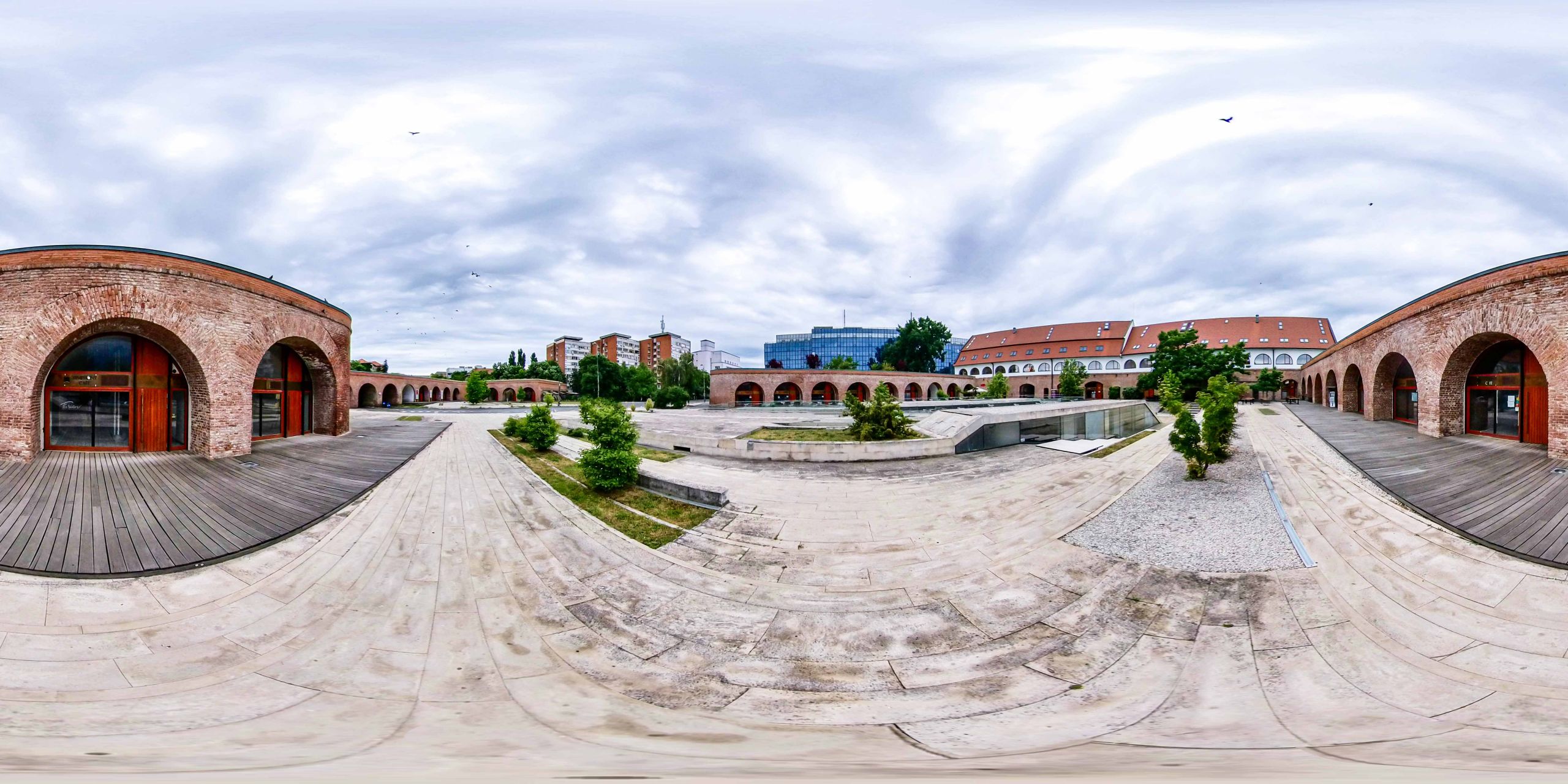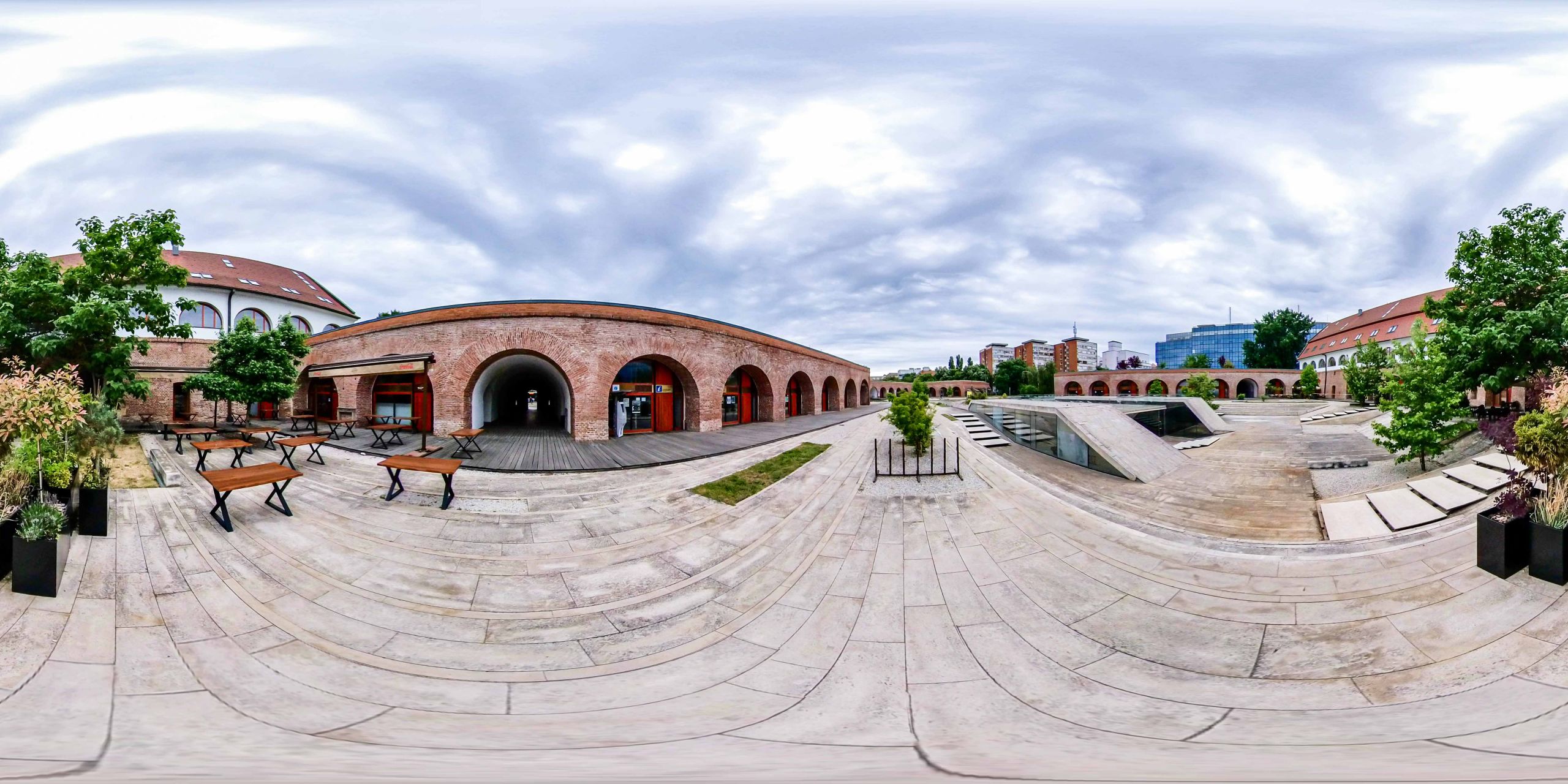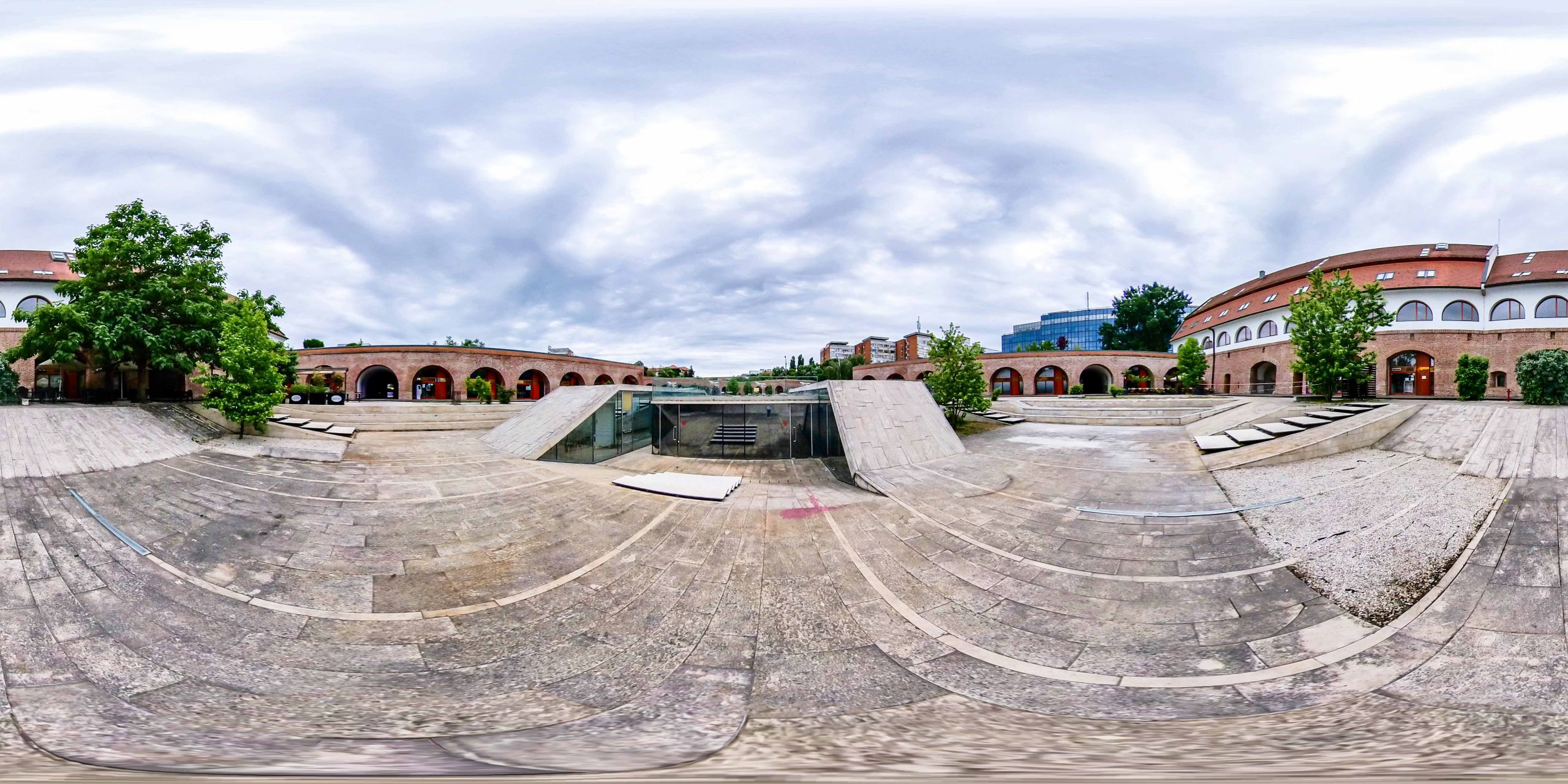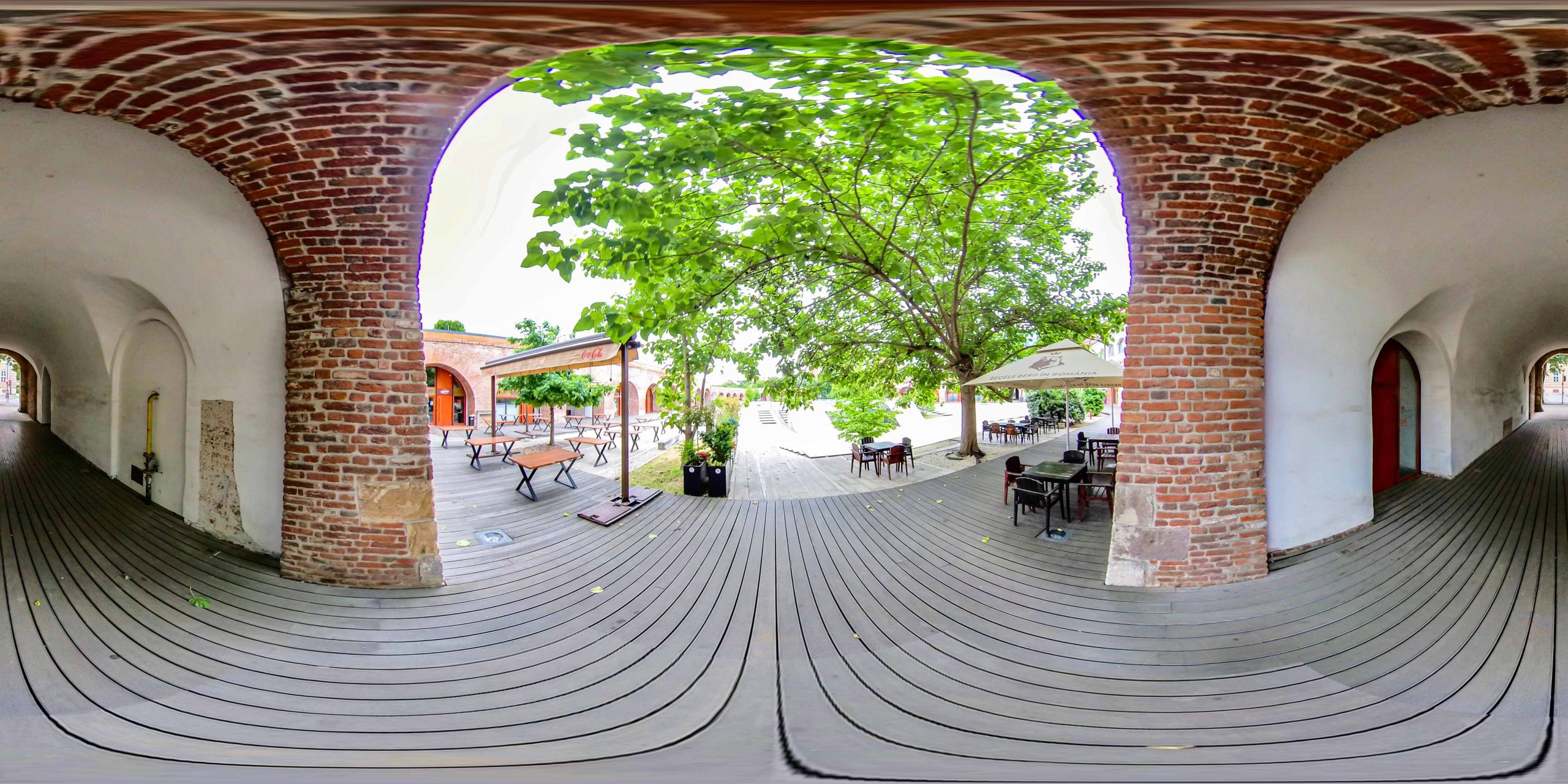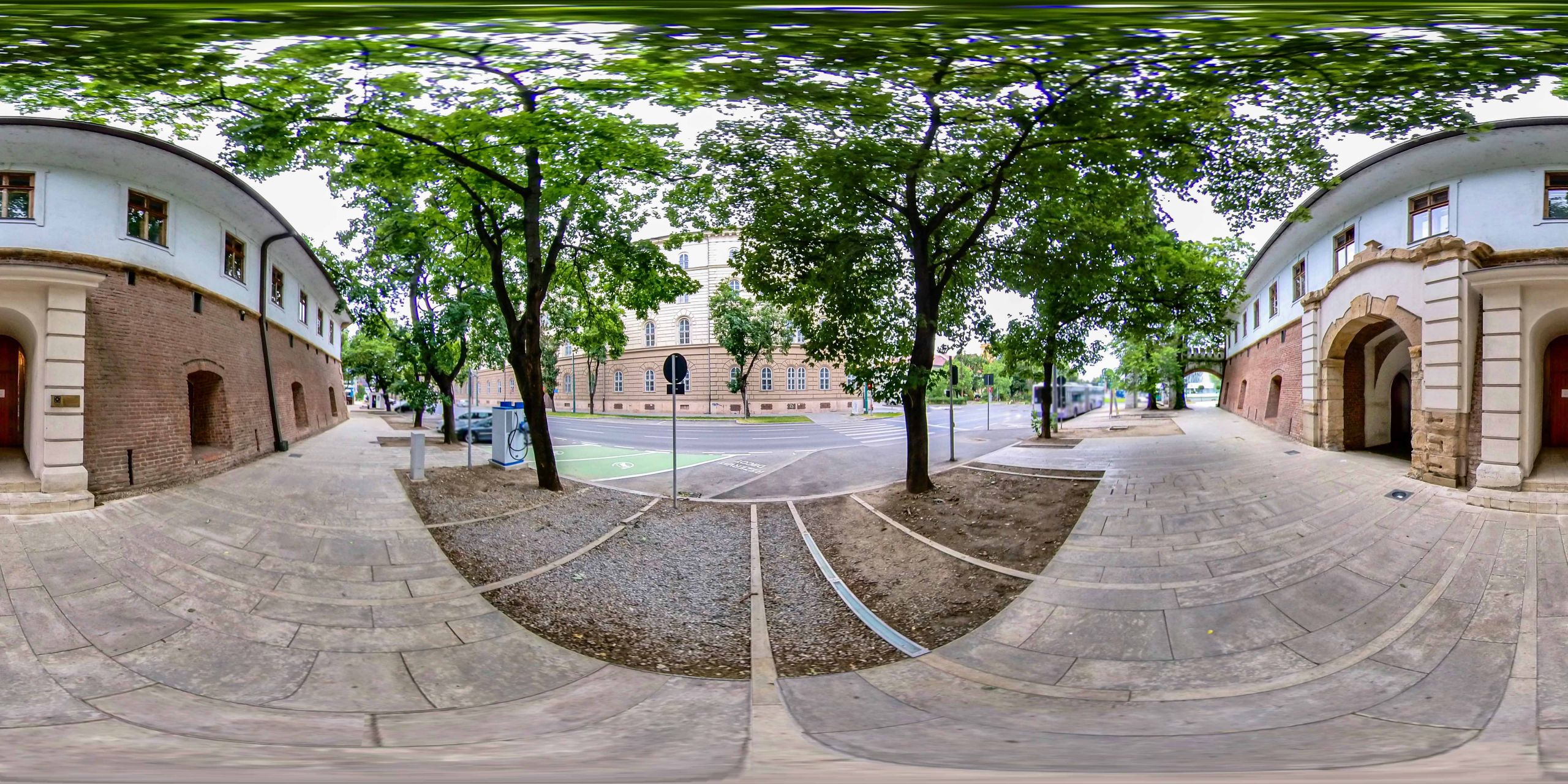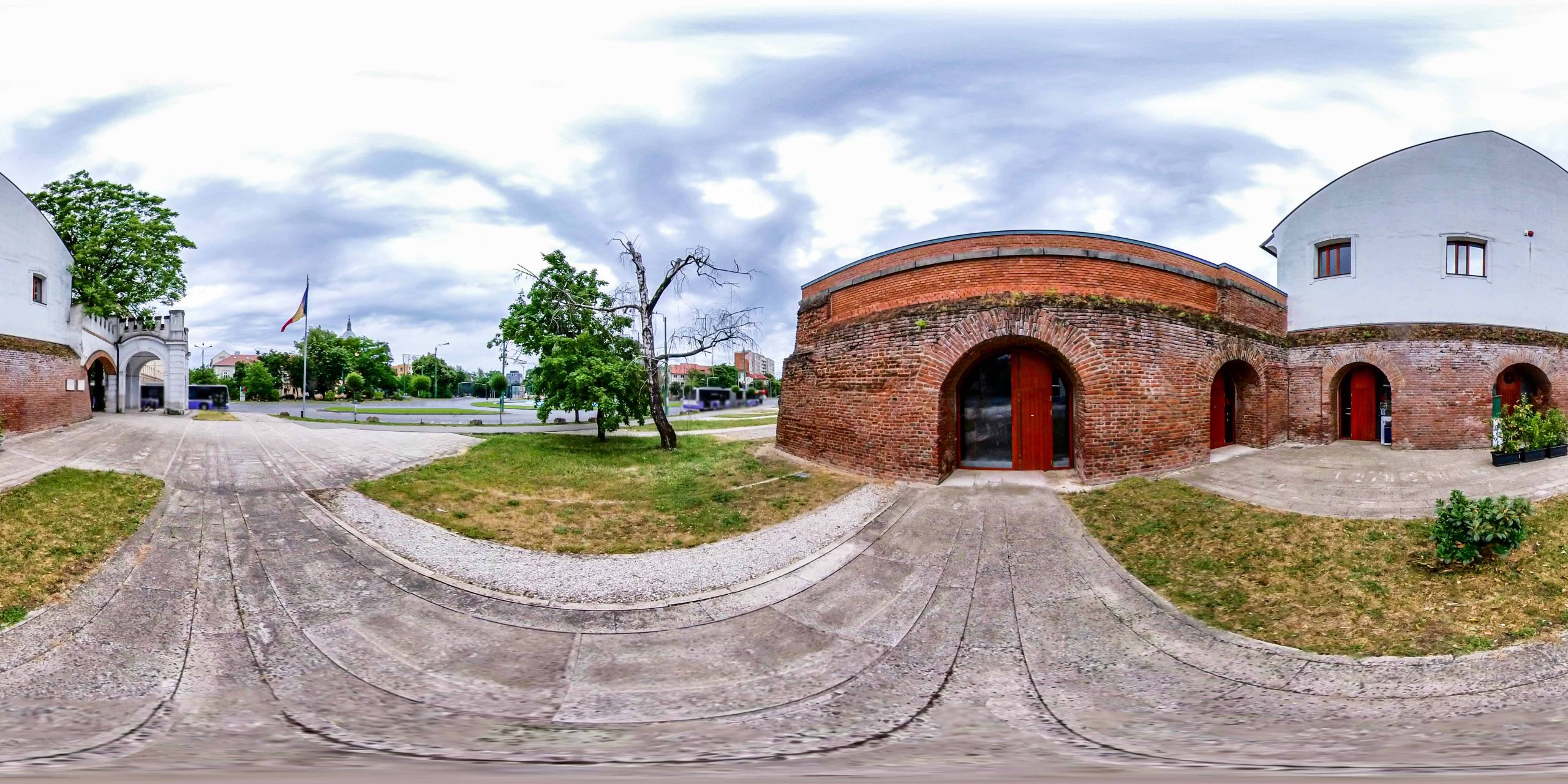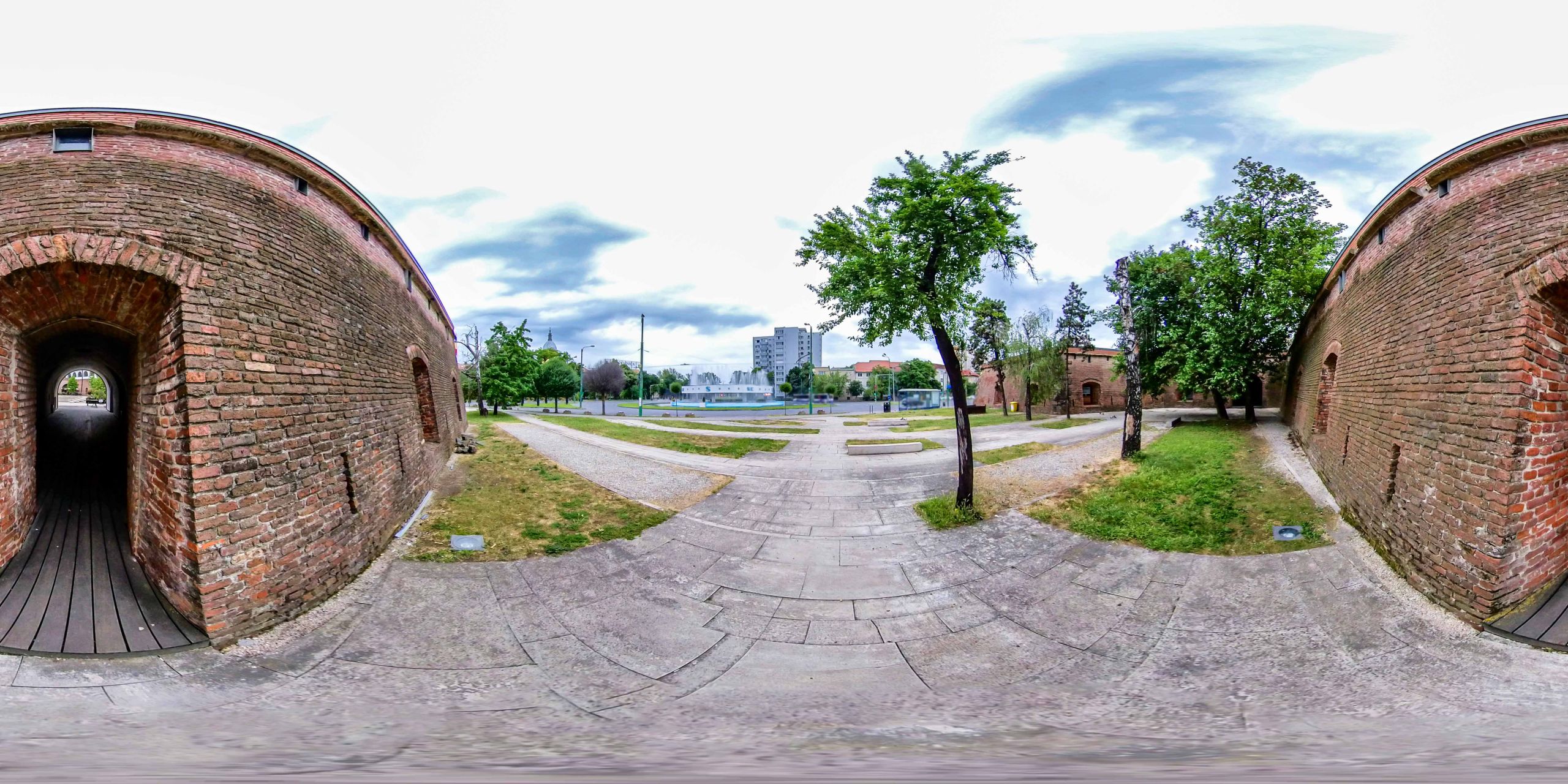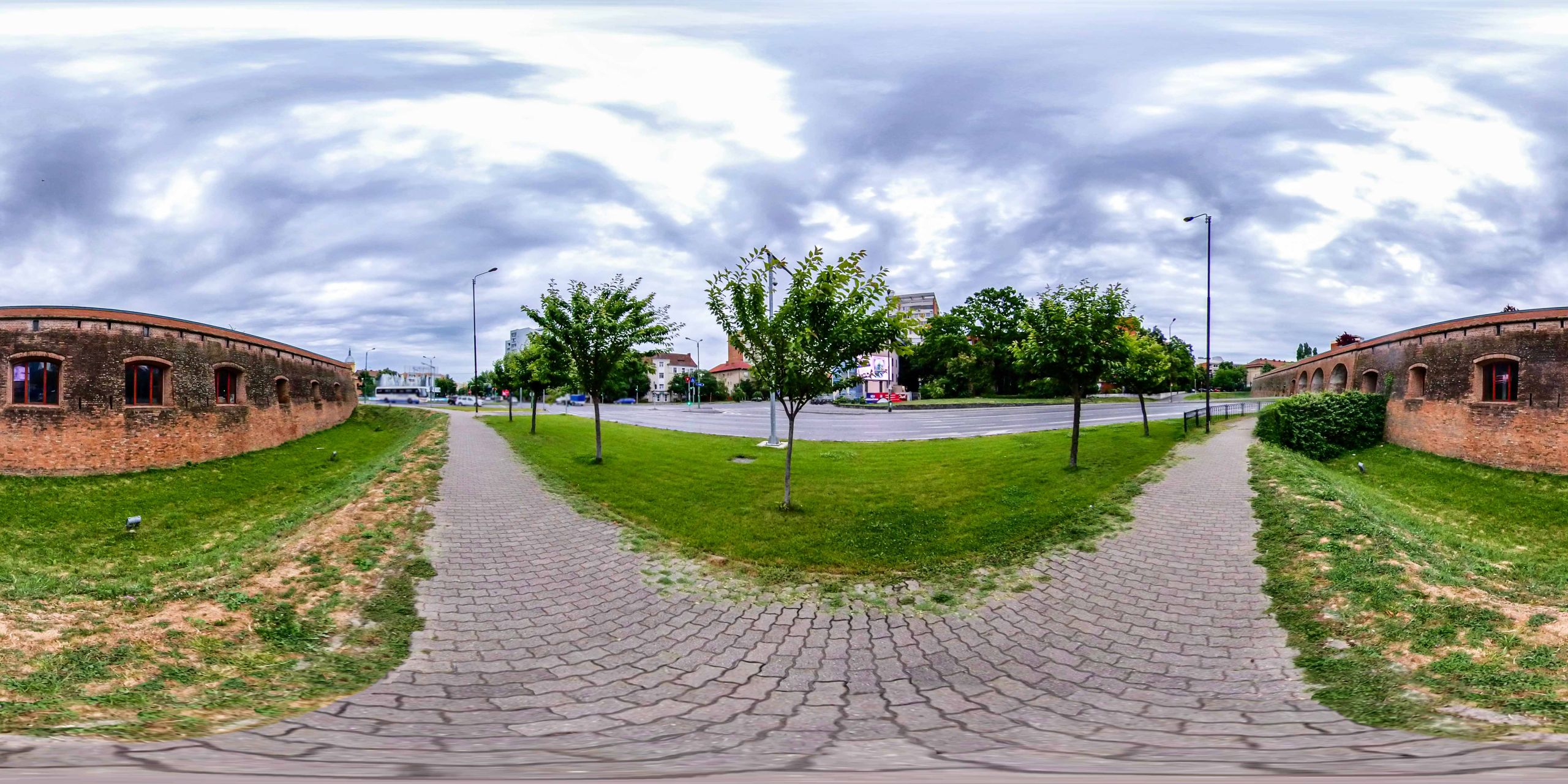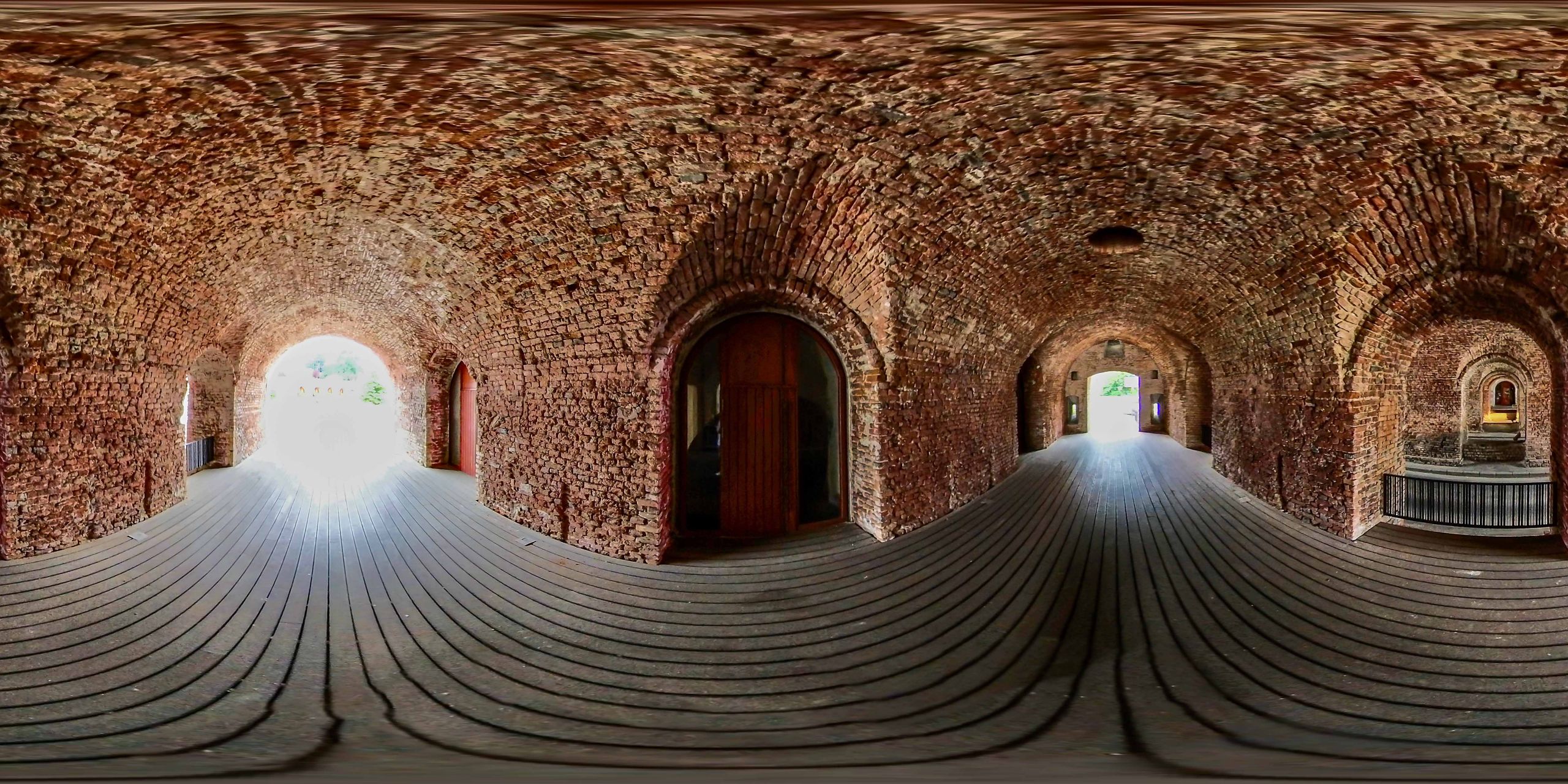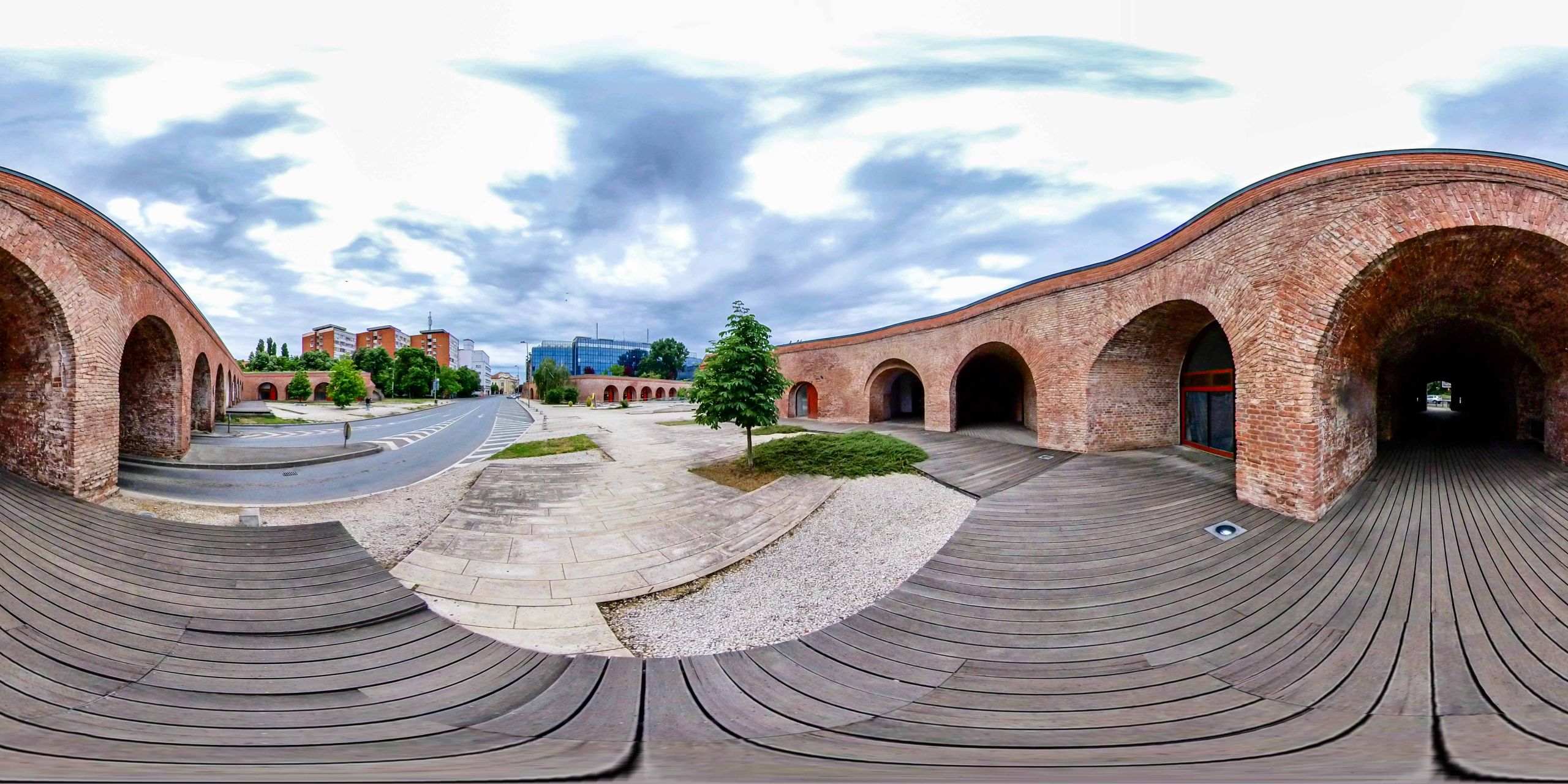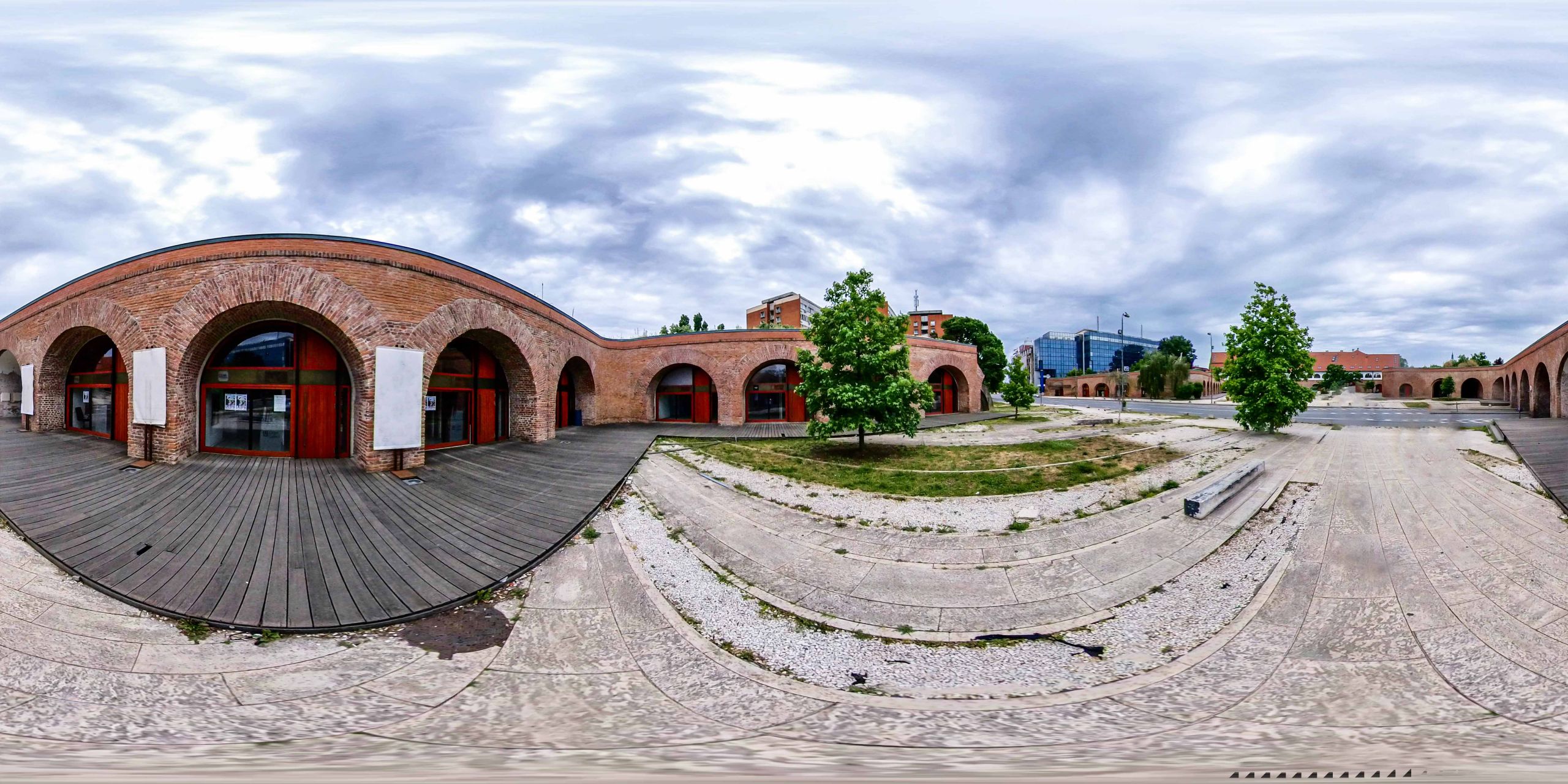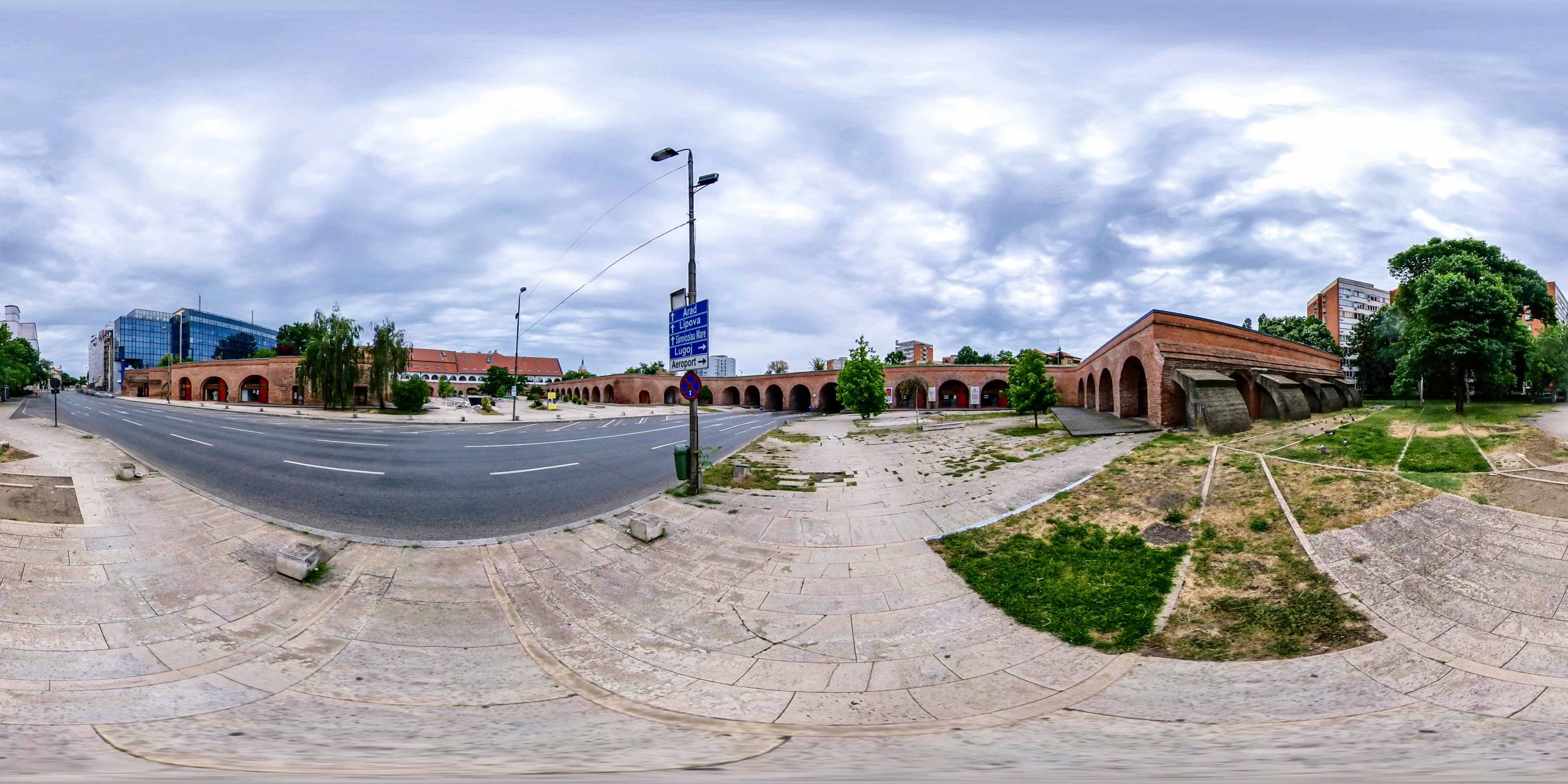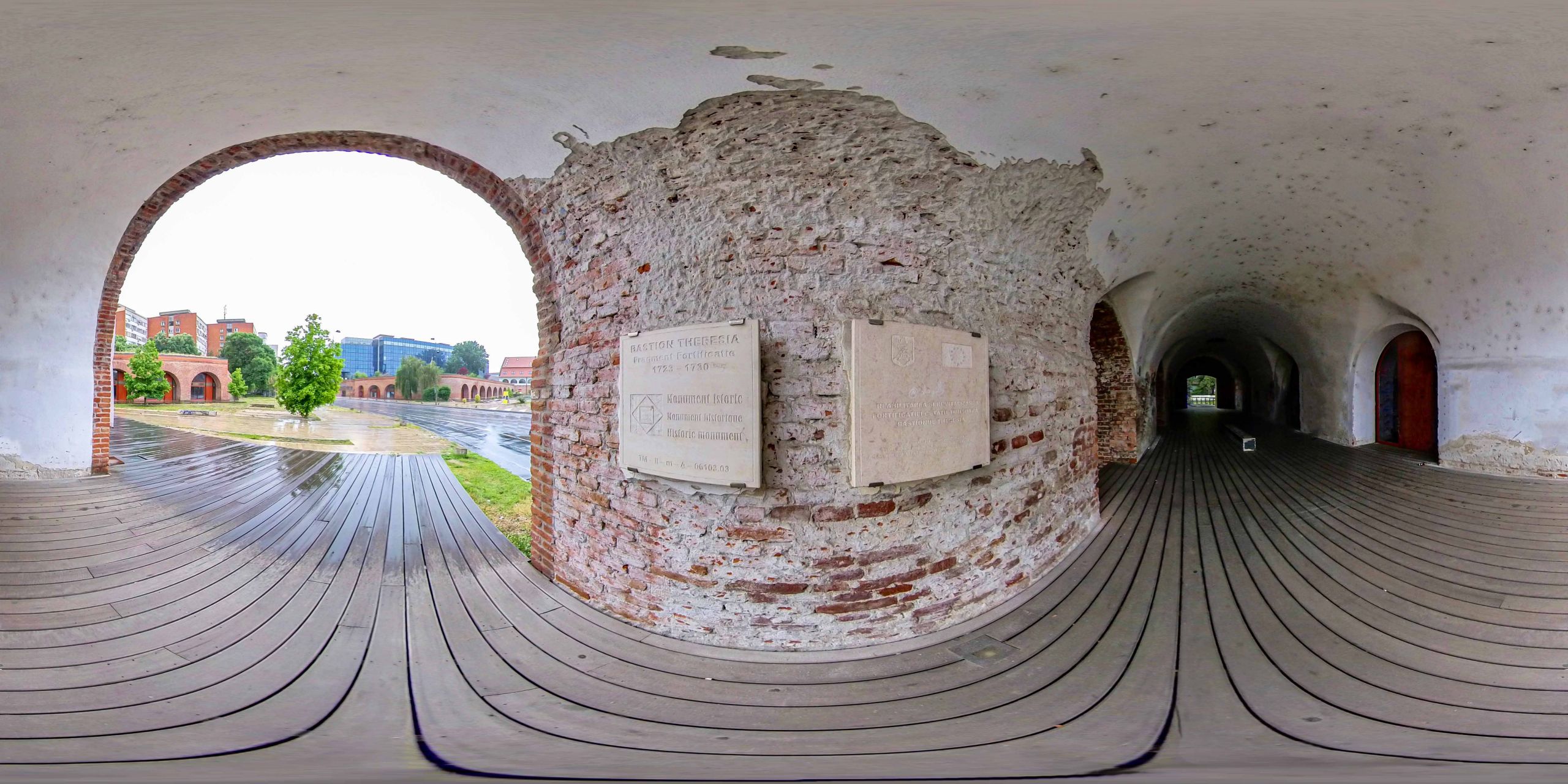The Theresia Bastion, also known as the "Bastion of the Fortress", is the largest surviving part of Timișoara's former bastioned fortress.
Listen to the audio version.
The Theresia Bastion, also known as the "Bastion of the Fortress", is the largest surviving part of Timișoara's former bastioned fortress. Unlike the other eight bastions, it was enclosed on all sides, one of its functions being to defend the Transylvanian Gate. In 1734 it was completely finished, being included in the first ring of fortifications and named Theresia Bastion, in honour of Queen Maria Theresia.
Apart from this fragment of the Bastion, three other smaller fragments have been preserved in the vicinity of the roundabout at the New Clinics, in the Botanical Park and near the 700 Square.
Originally the building of the Theresia Bastion served as a storehouse for supplies for both provincial and military authorities. In the 18th century its vaulted rooms contained ovens, flour and salt stores, among other things. Later it was raised and casemated. In the second half of the 18th century it temporarily served as the residence of the Catholic Bishop of Cenad. Over the years, this building has housed various town offices as well as state archives, warehouses, storerooms, workshops, school boarding houses, a printing press and a fencing school.
In the context of the demolition of the fortress at the beginning of the 20th century, this part of the former fortress was also to be demolished, after the erection of a substitute food store for the army on the current Gheorghe Lazăr Street. However, since various institutions were based here and the presence of the Theresia Bastion did not hinder the development of the city or the movement between the Citadel and the Fabric, it was kept.
From 1971 until the beginning of the last renovation, the Theresia Bastion housed the Ethnography Section of the Banat Museum, which contained the richest collection of folk art in Romania. MECIPT-1, the first electronic computer, created in the Romanian university environment at the Polytechnic Institute of Timisoara, has also found its place in the Technical Museum in the Bastion building. Part of the Timiș County Library and the Museum of the Violin used to operate in the same location. After the last restoration, completed in 2010, it became the temporary headquarters of the Banat Museum in Timișoara and other cultural institutions of regional importance.
Bibliography:
- Franz Binder, Alt-TemeswarVerlag der Deutschen Buchhandlung, Timișoara, 1934.
- Dan N. Buruleanu, Florin Medeleț, Timisoara. The story of its citiesMirton Publishing, 2004.
- Mihai Opriș, Recent discoveries, which required the correction of Timișoara's urban historyBrumar Publishing House, 2007.
- *** – Temeschburg-Temeswar. Eine südosteuropäische Stadt im ZeitwandelHerausgegeben von der Heimatortgemeinschaft Temeschburg-Temeswar, Karlsruhe, 1994.
Maria Theresia Bastion
Listen to the audio version.
“The area up here, once called the fortress, is now called “the inner city”. It is one of the four areas, separated by the groves of the park, which make up Timisoara. Up north is the town of Iosefin, and there is the factory district, which Romanians have called “Fabric” from the very beginning, when the Austrian government gifted its creation with this industrial benevolence, which was highly valued at the time; finally, on the other side lie the former town barns, which turned into an Elizabethan city.” (Nicolae Iorga, Selected Travel Notes about Transylvania and Banat, Lucian Cursaru (Ed.), vol. II, Bucharest, Minerva Publishing House, 1977, p. 120)
... So, I say that there was a natural inner modeling, which would somehow define, for every person, a spirit of the place. I am referring to these buildings, with their specificity, they influencing a certain participation of each one in the life of the burg, of the fortress. But I’m also referring to some loans, of attitude, of behavior, that the Romanians here assumed, and assimilated from populations of other ethnicities: Germans, Hungarians, Jews, Serbs. For example, speaking of the spirit of Timișoara, I think that this area, of historical and architectural heritage, of the former fortress - still called the old Fortress - which comes from the Bastion, of course, with Unirii Square, to the Cathedral, through the historical center of Timișoara, it is, so to speak, an argument in itself, of immediate impact, for someone coming from outside, an argument that speaks, by itself, about the spirit of the place. This one can be connected with the way the people from this place are, since-then especially the ones that have been here since the beginning, but also those that are here today, to whom something certain of the spirit has been transmitted, from generation to generation, of this place...
Eugen Bunaru interviewed by Aurora Dumitrescu in Timişoara, 2004
Szarka
by Vlad-Ioan Mitriș, 7th grade
"Grigore Moisil" Theoretical High School Timișoara
In Timișoara, on Alunelor street, number 6, there was a little house where lived Ion, a very intelligent and handsome old man, but who had a big defect: he didn't like to do anything, only to talk with friends, to read and to cook. Ion loved to feed the birds in the park. Apart from all this, Ion was a fussy old man who always stuck to his little routine: watering his garden, working in his workshop, eating, resting and, of course, feeding the birds.
One warm Friday day, Ion went to the Botanical Park, but to his astonishment, there were no birds in the park. Just as Ion was about to leave for home with the sorrowful thought that he had not fed anyone, a baby magpie with milk-white plumage and a pitch-black head jumped out of the tall grass. Satisfied, Ion took out the prepared crumbs and returned home, admiring the beauty of the city.
In the morning, when he opened the door of the house, he saw the baby magpie in the park at his feet. Ion politely told the baby magpie that he was out of food, then greeted him and went back to bed where he fell asleep. Around noon, Ion grabbed his work uniform and got ready to go to the workshop to fit the new bulbs. When he opened the door to his surprise he saw the baby magpie sitting on an old plastic chair, then he realized that he would have to take it into his care. He picked it up, and the chick got a little scared. He named him Szarka. Ion showed Szarka around his home and his workshop, even showing him the old anvil that had been handed down from generation to generation, but Szarka was of his own stupid kind and only partially understood what Ion was telling him. At the end, he showed Szarka a picture of himself and his grandson Andrei, and then looked blank with sadness.
At night, Ion put Szarka in a cage to sit and sleep in, and Szarka didn't like the idea of being a captive at night, but was content with the thought of having a home, and then slowly closed her eyes, thinking about what her life would be like from now on. In the middle of the night, Szarka woke up and heard Ion's knocking. He didn't let worry worry his soul, especially now that he had a home and a real friend. What Szarka didn't know was that Ion was very upset because Andrei's nephew wouldn't take the anvil, and for some time now, he hadn't even come to spend time with Ion as he had in the past.
Ion and Szarka became good friends. Every morning Szarka chirped him a trill to wake him up.
One evening, something seemed to be wrong with his friend Ion, but Szakra couldn't get out of the cage where Ion had put him overnight. Even in the morning he didn't come to open it for the ritual they both had.
Ion was lying in bed, barely able to breathe. Szarka tried to help him, but his cage was closed. He had no hope of being able to help his friend when he noticed a pigeon on the window sill looking for food. Pigeons have very complicated tongues. It's called "chirping". Szarka said a few soft words to it, which were sort of like, "Help!". The pigeon didn't think twice and flew in through an open window. He released Szakra from the cage and they walked together to the bed where Ion lay unconscious. He pinched his nose, but he still didn't wake up. They realized that it was quite serious and decided to go and tell their nephew Andrei, to whose house Szarka had been with Ion.
Szarka took the picture of Ion and Andrei in his beak and left the house at an unimaginable speed, heading towards the center of Timisoara where he was stopped by a swallow policeman, who told him that he was too fast and that he should give him a fine. Being penniless, he tried to get away by going around the swallow. He only succeeded in getting seven other swallows with police officer functions to follow him. Puzzled, he climbed through the broken window of an apartment and was surprised to see a picture on the wall identical to the one Ion had in his studio.
The room was crammed with a pile of medical machinery, and in an armchair lay none other than Andrei, Ion's nephew. She woke him up and began to explain everything to him, but it's a pity that not all people can understand it all. Szarka took the picture of Ion out of his beak and showed it to Andrei, signaling him to get up and follow him to Ion's house. The two of them had to get to Ion's house as quickly as possible or he wouldn't get another day.
Szakra asked the pigeons for help and they came in great numbers to fly Andrei to Ion's house. Szakra promised them that Andrei would be their permanent family doctor.
When they entered the room, Ion was lying on the bed. Andrei maneuvered him under the worried eyes of Szakra and the pigeons. They made it in time, Ion seemed to be recovering and, seeing Andrei, smiled gratefully.
In the end, Ion confessed to Andrei that he had suffered a lot for not appreciating the anvil he wanted to give him as a family heirloom. Andrei apologized to him and promised that nothing is more important for any family than the well-being of each family member and that he would do his best to keep the family united and happy.
After two months, Andrei returned to Ion and invited him to visit his new medical clinic where he noticed that the nicolvala was in pride of place. Ion looked at him in astonishment and Andrei said, "It is not just an heirloom from our ancestors' blacksmith's shop, it is the very cornerstone of our family". He looked at Ion with tears in his eyes, knelt down and thanked him for not letting it wander away from him.
The city glowed under the bright garlands that streaked the sky, protecting its inhabitants, whispering to them: 'A family doesn't fall apart so easily!' Be kind to one another, love one another unconditionally.
To whom do we owe this happy ending? Timisoara!
An unusual story
by Sofia Irina Harcău, class VIII
"Grigore Moisil" Theoretical High School Timișoara
One day, three children went to a creative writing class where they learned many exciting things about the history of Timișoara. After finishing the course, they became very interested in their home city.
A few days later, the three friends decided to explore more, so they went to the library. In a corner of the reading room, they found an old book full of interesting information about Timisoara. As they carefully flipped through the pages, Oana inadvertently dropped the book on the floor..:
- Luca, please help me and pick up the book, she said slightly puzzled.
Luca bends down to pick up the book, and a few old, faded photos fall out.
- What are those? Denis asks curiously.
- Some photos, but they're very faded and I can't really see what's in them, said Luca, examining one of them.
Oana bends down and picks them up off the floor. The children try to make out the barely visible writing in the corners of the photos. After a few tries, they manage to make out some of the words.
- I wish I was here, Luca said and took the picture in his hand, but in a second it was gone.
- What happened? Where's Luca?" asked Denis in astonishment.
- I don't know, but it sounds interesting. Let's give it a try! Oana said excitedly.
- Well, I wish I was here too! he said, touching another photo, and in an instant he disappears too.
- I wish I was here! said Oana, after taking another picture and immediately she disappeared too.
Luca suddenly wakes up in front of the Cathedral, but the buildings and the atmosphere of the city seem completely changed. He calls out to his friends, but gets no answer. The only place he thinks he might run into them is at school, so he hurries to Balcescu Square.
Denis reaches Therezia Bastion and, equally confused, decides to walk to school. Meanwhile, Oana, who had landed in Union Square, makes the same decision. Before long, the three of them meet in front of the school. Smiling and full of relief, they start running towards each other, hug each other laughing and Oana asks:
- What are you wearing?
- What are you wearing? the two ask in unison.
- I didn't notice my clothes had changed, I was too scared, but look what I found!
And she shows them that on the back of the photograph she had in her hand, she had discovered an inscription, "To turn around, place the three photos side by side." The children place the photos side by side and the letters on them begin to rearrange themselves, forming the message, "Now smile."
Smiling broadly, the three suddenly find themselves back in the library.
- Did I fall asleep here? Denis asked confused.
- But I had the strangest dream. And we can't all have had the same dream at once.
- Look!" exclaimed Oana, holding up a photo of them. Everything was real, that photo is with us.
- Well, tomorrow we must find a way to go into the future! Denis said enthusiastically.

